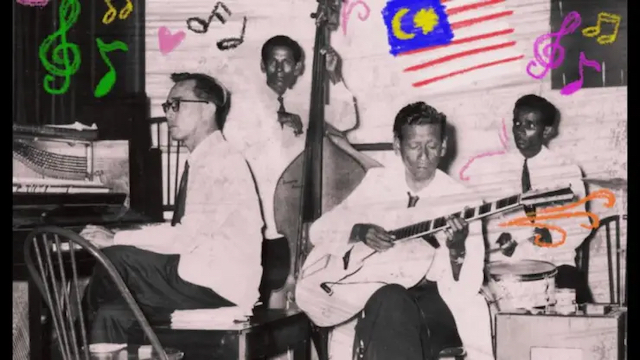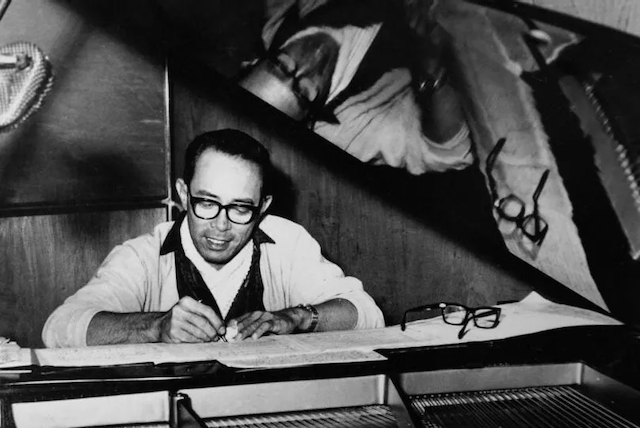

IT WAS in Tanjong, Pulau Pinang, that Jimmy Boyle wrote ‘Putera Puteri.’ In fact it was conjured on the baby grand in the hall of St. Xavier’s Institution at Jalan Farquhar. Jimmy was a teacher there and would sometimes also paint during school breaks.
During free time and in between classes, he could be found tinkering on the ivories in the school hall.
‘Putera Puteri’ was later sung in the school every Monday after assembly right after ‘Negaraku.’ The piano was a ‘Merachaes & Co. Hamburg.’
Many of us, unknowingly perhaps, grew up with Jimmy’s compositions in the 1960s and 1970s. His genius lay in his ability to integrate and synthesize both his Malay, also traditional music heritage and his training in western classical music.
Many have said that Jimmy Boyle in his compositions always championed the spirit of unity and national pride. He wrote from his soul. His tunes capture our imagination of the expression of the Tanah Air.

My emotional response to his tunes would be is ‘Putera Puteri’ and ‘Jauh Jauh’. In my early sonic consciousness, the tunes are synonymous with Jimmy Boyle. ‘Putera Putri’ has been sung in schools, by choirs, played by musicians all over the country. It is a rare song. It evokes that spirit of Tanah Air, of presence and belonging. And I remember Jauh Jauh with Zain Azman.
In the story of Jimmy Boyle, compiled by his son, James Boyle titled Putera Puteri- The Music and Legacy of Jimmy Boyle (2013), we find the man behind the music, and for the very first time, the original hand written music and piano arrangements of Jimmy’s most popular music. Born and bred in Pulau Pinang in 1922, his songs began to creating sonic waves from the 1950s.
A collection of Jimmy’s published composition is found in the book Irama Tanah Melayu, published in 1962 on behalf of Donald Moore by Eastern Universities Press Ltd, Singapore and the United Book Company Limited of Penang. It contains a collection of Jimmy’s well known tunes, featuring a popular Malay poem put to music.
These were categorized as patriotic (Kemegahan Negaraku, Putera Puteri, Menuntut Untuk Berbakti, Bertugas, Megah Rasa), romantic (Sang Bayu, Gema Rembulan, Rayuan Mesra, Berdendang Ria), Children’s (Api dan Ayer, Ingat Ingat, Bunga Negara) and Nature – the beauty of Malaysia (Tepi Pantai, Ke Hulu ke Hilir, and Berdendang Ria) themes. The lyrics were written by Dol Baharim, and the foreword by Dol Ramli.
Dol Ramli was then Director of Radio Television Malaysia (RTM), and fellow Penangnite, Ahmad Merican was the Broadcasting Officer of RTM’s Music Department.
James Boyle in his tribute to his father, reminds us that in Jimmy’s composition, the unifying theme was of national unity tunes aimed at instilling a greater sense of national pride in the younger generation, are “tunes that were ‘cheerful in nature, yet containing music of many varieties, be it elements of classical or jazz…” and recalling my schooling years in Pulau Pinang, Jimmy Boyle’s tunes evoked an essentially Malayan landscape – harmonious, peaceful and prosperous.
According to the younger Jimmy, “schools all around the country were encouraged to purhase the book and it has remained the staple nationalistic school songs in the following years.” During his lifetime, Jimmy Boyle would compose close to 350 tunes in various moods – romantic, jazz, traditional Malaysian, patriotic, and avant garde. And many tunes probably remain unknown.
The milieu in Pulau Pinang in the post-war period with its social and political environments, a potpourri of cultures and traditions, a port city creating space for entertainment, and social pastime, cultivated various forms of expression. There was an audience – a fertile ground for experiments by musicians.
With the new post-War spirit of changing musical tastes, popular music in Pulau Pinang grew, and was further nurtured by the popularity of radio and the cinema. Those of my late father’s tanjong-based generation were consumers of the new popular culture. Not many would have heard of Malaya’s first state radio station – Perak road-based ZHJ, broadcasting on 49.3 metres
James Boyle in citing James Lochhead, music historian and curator in The Music of Penang in the 1940s and 1950s (2011) affirms that Pulau Pinang’s musicians led the development in Malaysian music. We saw the emergence in the likes of Ahmad Nawab, Ooi Eow Jin, Joe Rozells, Ahmad Daud, P Ramlee, Ahmad Merican, and Jimmy Boyle. They create sounds of diversity and fusion of styles.
An article written by the elder Jimmy for a local newspaper in 1966 reflected his sincerity and honesty to his trade – that music in any country must be based on the traditions of the past, and that “Malaysian music was a synthesis” of different forms from the region with the core “from the various types and styes of its native peoples.” Jimmy Boyle was a staunch exponent of jazz.
I still remember the Jimmy Boyle Quartet over the airwaves. It was his interpretation of jazz. In the 1950s, jazz was seen to be a ‘thinking man’s music.’ Jazz has been an elemental part of his compositions and performing techniques. According to his son, jazz gave Jimmy a keen sense of harmonic structure. Some of his familiar compositions like ‘Jauh Jauh and ‘Gema Rembulan’ echo that structure. These are a precise combination of Malay music, with jazz and other western styles. ‘Jauh Jauh’ has been popular with jazz singers in Malaysia throughout the years.
Citing James Lochhead (2011), Jimmy Boyle’s compositional techniques had drawn significant elements “from the greatest composers of this era; from the rhythmic and arranging techniques of George Gershwin, the lyrics that rhymes beautifully with his music of Irving Berlin, and the melodic genius of Jerome Kern and the sentimentality and national pride of Richard Rodgers.” Jimmy was aware of the appeal to the masses and the untrained music public.
In his Foreward to Putera Puteri, composer and arranger, Ramlan Imam argues that Jimmy Boyle’s compositions has been considered by many to be a Malaysian standard repertoire, sung by many school choirs, arranged and recorded by Radio Television Malaysia Orchestra. The likes of Julie Sudiro, Bing Slamet, Zainal Abu, Razak Majid, and the unforgettable Zain Azman had paid tribute to the legendary composer.
Among his contemporaries are Alfonso Soliano and Gus Steyn. Together they experimented with traditional Malay music utilizing both Western orchestra and traditional instruments. But it was his own brand of blending the west and the east, like the style of the keroncong, advocating a romantic feel, with the the march like rhythm and the jazz waltz rhythm.
Jimmy passed way in 1971. His tunes remain essentially Malaysian. An era has passed, much like the lingering sounds of ‘Jauh-Jauh.’ – apakhabartv.com
- DATUK DR AHMAD MURAD MERICAN is currently a professor at the International Institute of Islamic Thought and Civilisation, International Islamic University Malaysia (UIAM)
Original article https://apakhabartv.com/2024/03/30/putera-puteri-and-the-national-spirit-of-jimmy-boyle/